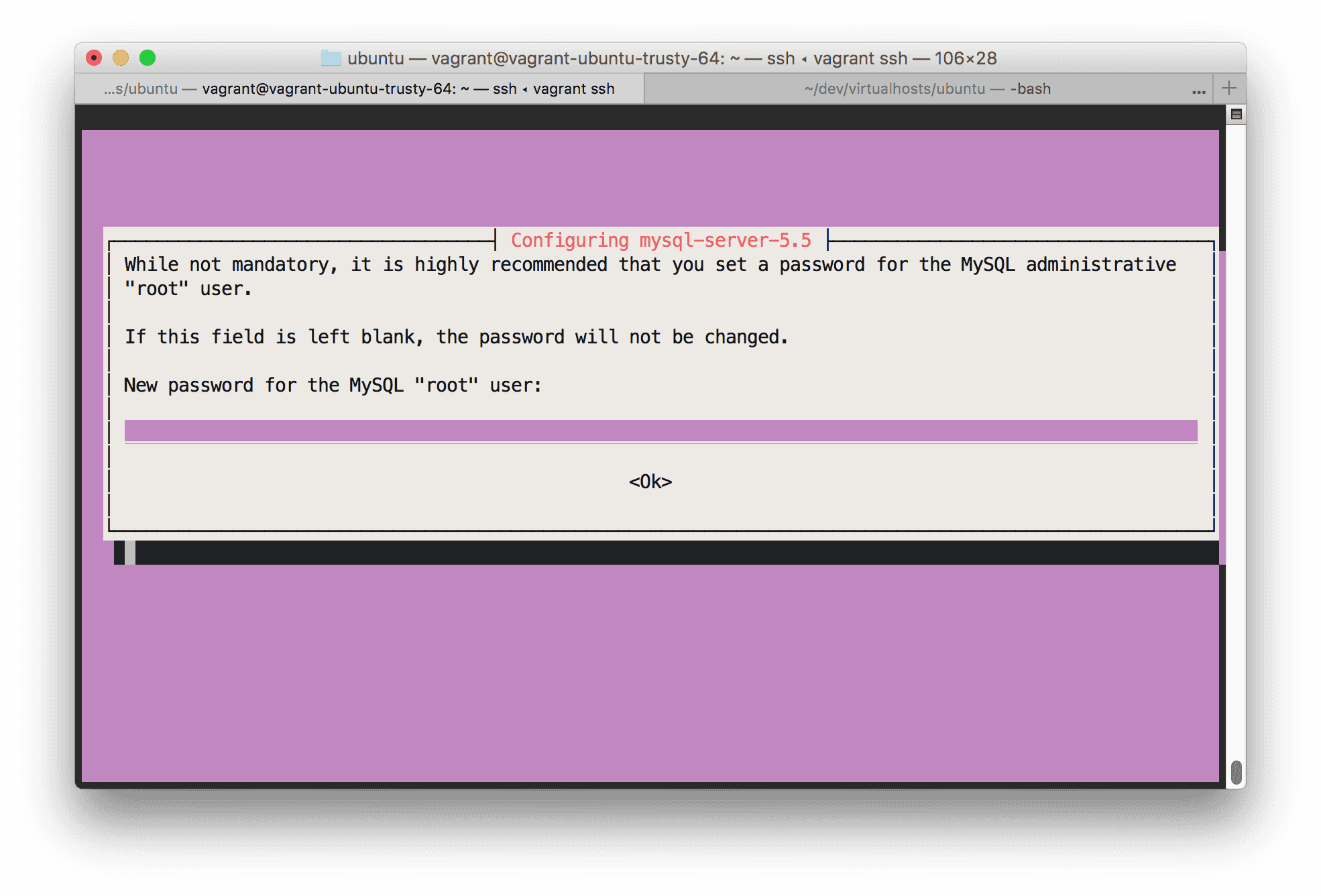

- #Install mysql on mac via vagrant install#
- #Install mysql on mac via vagrant archive#
- #Install mysql on mac via vagrant full#
- #Install mysql on mac via vagrant free#
=> default: Loading metadata for box 'ubuntu/trusty64' => default: Box 'ubuntu/trusty64' could not be found. Output should be similar to and ongoing: vagrant upīringing machine 'default' up with 'virtualbox' provider. Start VVV by issuing the above ‘vagrant up’ command. In this example the VVV directory is filed in the home folder – in Terminal change directory into the folder cd ~/VVV Launch VVV vagrant up Or master… git clone -b master git:///Varying-Vagrant-Vagrants/VVV.git vagrant-local Your cloned directory will be named VVV or name it something else… in the case below, it’s named vagrant-local git clone -b develop git:///Varying-Vagrant-Vagrants/VVV.git vagrant-local Or master… git clone -b master git:///Varying-Vagrant-Vagrants/VVV.git To clone the github repo VVV on your local machine – for the develop branch us: git clone -b develop git:///Varying-Vagrant-Vagrants/VVV.git I currently use the develop branch as it has the latest fixes and is very active – if you prefer you can also use the master branch.
#Install mysql on mac via vagrant install#
I would recommend making the install in a folder in your home directory – to get to your home directory just run cd on the command line. The ‘develop’ branch is actually the latest VVV2 version, the ‘master’ branch is the previous version. You can leave it in Downloads or move it to another location.

#Install mysql on mac via vagrant archive#
If you are comfortable with Git you can clone the repo locally, otherwise download the zip archive from GitHub VVV-develop.zip to your downloads directory, unzip it and rename it to ‘VVV’. Don’t worry about the location of where you filing at this point as these are global plugins.

If you get errors installing the plugins, most of these related to network timeouts, just repeat the process. VirtualBox Guest Plugin vagrant plugin install vagrant-vbguest This plugin allows specific VVV scripts to fire on boot and on halt of the virtual image for example it will back up your databases when vagrant is halted or shut down. Vagrant Scripts vagrant plugin install vagrant-triggers Install this plugin which will add the required host mapping on your /etc/hosts file for the default local development URLs Vagrant Hosts vagrant plugin install vagrant-hostsupdater The GitHub instructions for VVV say these steps for 2 or 3 plugins are optional, which they are, but to have VVV up and running without further configuration it’s best to install these plugins prior to running vagrant up otherwise you will need to do further configuration to get Nginx, PHP and MySQL running. Before you install the main VVV it’s best to install 2 needed plugins.
#Install mysql on mac via vagrant full#
You get all the above and some more which cover the full gamut of WordPress theme and plugin development. MariaDB 10.1.x (drop-in replacement for MySQL).Installing VVV Varying Vagrant Vagrants Key components that you get in your VVV Box Install Virtual Box and Vagrantįirst things first, the base tools need to be installed Virtual Box and Vagrant itself, follow the Virtual Box instructions to install that, and then Vagrant. Some good folks have got together and released a virtual box image suitable for local WordPress development called VVV aka Varying Vagrant Vagrants.
#Install mysql on mac via vagrant free#
You can download and use a number of virtual ‘boxes’ with the aid of a virtual machine application like the free VirtualBox, you can also create and share your own boxes with colleagues via the Vagrant Cloud. Vagrant is a very powerful development tool that allows you to use virtual images referred to as boxes to use as your local development environment.


 0 kommentar(er)
0 kommentar(er)
